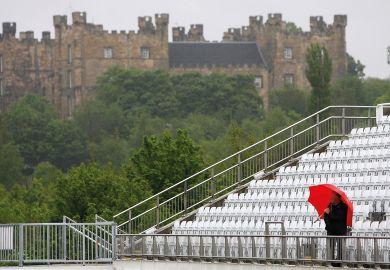Bright pupils who go to comprehensive schools are almost just as likely to attend a high-status university as grammar school children with similar backgrounds, a study says.
According to a Department for Education report, grammar school pupils are roughly four times more likely to go to a top university than those educated in non-selective secondary schools.
Nearly 40 per cent of grammar school pupils attend a “high-status institution” compared with less than 10 per cent of those from comprehensives, according to the report, titled The link between secondary school characteristics and university participation and outcomes, which was written by Claire Crawford from the Institute for Fiscal Studies and the University of Warwick.
But that gap fell to less than five percentage points when pupils with similar attainment levels at the age of 11 and similar background characteristics, such as socio-economic status and geographic location, were compared.
The results suggest “the characteristics of the school’s intake explain over two-thirds of the difference in participation rates between pupils attending different types of secondary schools”, the report says.
The “vast majority of the remaining differences” were explained by the fact that “pupils at some schools leave with better grades in subjects and qualifications that are more attractive to high-status universities”, it adds.
To this effect, universities should make a distinction between students from grammar schools and non-selective state schools when making offers to applicants.
The study found students from comprehensive schools were less likely to drop out and more likely to gain a better degree than private school students with the same exam scores and background characteristics, but would also do better than similar grammar school pupils.
To this extent, “university entry requirements could be lowered for pupils from non-selective or low-value-added state schools in order to equalise the potential of all students being admitted to university”.
But lower offers given to state school pupils for widening participation reasons should not be extended to pupils at grammar schools, whose students tended to come from more affluent backgrounds than those at comprehensives, the report says.
Register to continue
Why register?
- Registration is free and only takes a moment
- Once registered, you can read 3 articles a month
- Sign up for our newsletter
Subscribe
Or subscribe for unlimited access to:
- Unlimited access to news, views, insights & reviews
- Digital editions
- Digital access to THE’s university and college rankings analysis
Already registered or a current subscriber? Login




